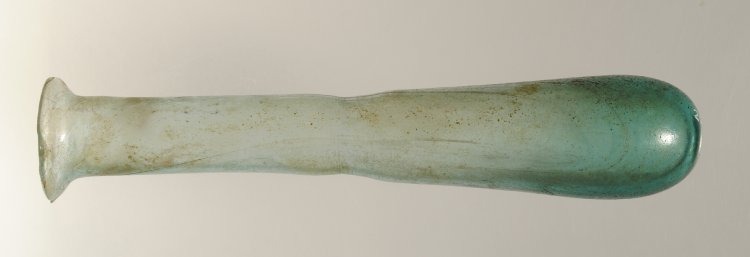The first of three podcasts produced by Natalie Steed provoked by Clare Whistler’s Residency at the QMUL Centre for the History of the Emotions in 2013-14.
“I take things out of boxes, but need boxes to put them back in”
A light dabble with a search engine on the subject of “tear bottles” will lead you to a world of assertions, often by online shops, about the historical use of “tear bottles” in the mourning rituals of Romans, Greeks and Victorians with stories of how tears were collected in small, stoppered, glass bottles as a sign of respect and grief.
They’ve featured in opera designs and art installations and there are at least a couple of references to collected or collecting tears in the Bible including Psalm 56:8 where God is being addressed:
Thou tellest my wanderings: put thou my tears into thy bottle: are they not in thy book?
John Gill’s mid eighteenth century Exposition of Whole Bible unpicks this with another assertion about the “tear bottle” in the psalm being an allusion “to “lachrymatories”, or tear bottles, in which surviving relatives dropped their tears for their deceased friends, and buried them with their ashes, or in their urns; some of which tear bottles are still to be seen in the cabinets of the curious.”
In other translations and versions it’s not a bottle into which God’s collecting tears but a wineskin. In others he’s just writing them down on his scroll.
Nevertheless, the idea of the tear bottle remains a powerful one and a way of thinking about tears and emotion.
One aspect of Clare Whistler’s residency was her interviews with academics and others at QMUL about tear-bottles. She asked people to imagine a receptacle for their tears and also to collect their tears in a small book. She created poems from their answers and I have used some of these poems in the podcast. I wanted to show how Clare’s project mixed the professional investigation with the more personal reflection.
We also hear Jennifer Wallis, Chris Millard and Thomas Dixon, from the Centre for the History of Emotions talk about tears in their research: the internally liquefying inmates of a 19th Century Asylum; Neil Kessel’s social experiments in the 1960’s with sales of large quantities of aspirin to weeping women and Hogarth’s Enthusiasm Delineated. Alongside this, Paul Roberts, Head of the Roman Collections at the British Museum, shows me some beautiful, tear-shaped glass bottles from the British Museum’s stores and there are some specially commissioned musical tears created by the composer Jonathan Dove.
Read about and listen to all of the related podcasts.
Read more about ‘Weather, tears, and waterways’.

